Introduction: In this article, James Pylant looks into the “whodunnit” case of Charlie Dorris, and finds a family hounded by misfortune. James is an editor at GenealogyMagazine.com and author for JacobusBooks.com, is an award-winning historical true-crime writer, and authorized celebrity biographer.
On a quiet summer morning in 1924, gunfire erupting in an exclusive Long Beach, California, apartment left two people dead and a lone survivor to tell what happened. At the center of this story was Charles “Charlie” W. Dorris, whom newspapers dubbed the “Man of Tragedy.” The Los Angeles Examiner published his photo.
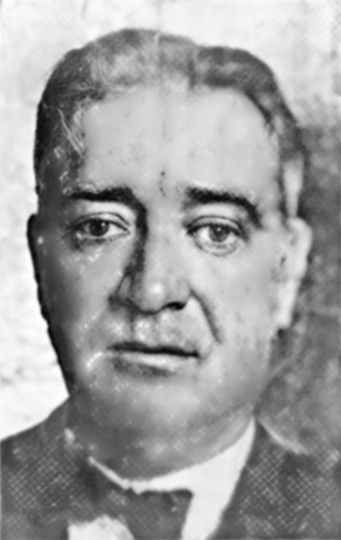
GenealogyBank’s Historical Newspaper Archives are a rich source of information about the headline-making Dorris family, with many reports detailing the family’s long history of misfortune.
The saga of Charlie Dorris began with his indomitable mother. The daughter of Irish immigrants, 20-year-old Jane Coyne married Ervin Morgan in her native Cleveland, Ohio, in 1858. The couple had three daughters, but after nearly a decade of marriage, Jane sued her husband for divorce in 1867 for “willful absence and gross neglect.” She sought the children’s custody and “suitable alimony.” Their divorce notice appeared in the Cleveland Leader.

With three small daughters in tow, Jane headed for the Golden State, following one of California’s trail paths for “forty-niners”: traveling by sea before crossing the Isthmus of Panama on muleback.
Jane settled with her family in Monterey, California. There, she remarried on 24 April 1869 to farmer William A. Dorris. She gave birth to four more children including their only son, Charles W. Dorris, born on 4 November 1878.
He was a three-year-old when the first tragedy struck his family. On 18 April 1882, Jane Dorris returned home from visiting a neighbor and found Charlie’s teenage sister, Maggie, dead, lying face down on the floor.
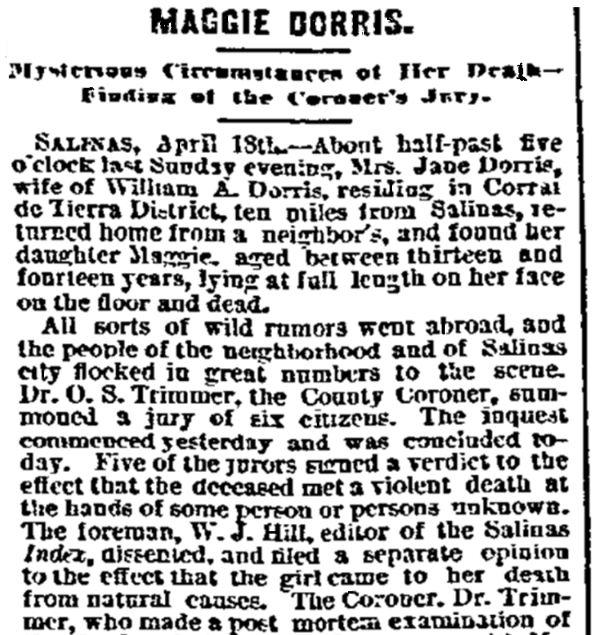
This article reports that “All sorts of wild rumors” spawned from the unusual death, with neighbors and curiosity seekers flocking to the family home. A coroner’s inquest concluded with the jurors’ verdict: Maggie Dorris’s violent death came “at the hands of some person or persons unknown.” The lone dissenter, the foreman, believed the teen died of natural causes. The coroner, examining the brain, came to the same conclusion. They theorized Maggie had a stroke and fell forward, causing a bruise on her face and hands as she fell against a sewing machine. “The deceased was of abnormal growth,” the article reports. “She was less than fourteen years of age, and weighed over 180 pounds, which would seem to support the apoplexy theory.”
Still, two other doctors made a subsequent post-mortem examination, and they concluded with the majority verdict: foul play. Two Chinese farm laborers who worked on a neighboring farm were arrested and held on suspicion. “But no evidence has been developed to justify any criminal charge against them.”
Charlie Dorris grew up in hotels. In 1885, his mother secured a lease to a sanitarium in San Diego, California, which she converted into a hotel. Located in the heart of the city, the New Carleton Hotel offered “special rates to families and troupes.”

However, the hotel brought problems for its owners, as detailed in a series of newspaper reports. Two guests went on a room-to-room burglary spree, and another who ingratiated herself with the owners as an “extremely proper” young lady was exposed as a “wicked” con artist. An older woman staying there stripped and announced to Jane that she would streak in the streets so “she could atone for her sin.” A young blonde guest was declared insane after awakening fellow guests in the wee hours breaking windows, pitching furniture into the hall, and saying someone wanted to “take her away.” William Dorris was allegedly battered by Mrs. S. Kahn, a competing hotel owner, and one of the New Carleton’s employees “went crazy” and chased an imaginary enemy with a butcher knife.
While running the New Carleton Hotel, Jane fell victim to a land development scam for a proposed resort in Mexico, investing $14,000 (the equivalent of $464,000 today). She attended a legal hearing investigating the matter along with several other investors – most of them women.
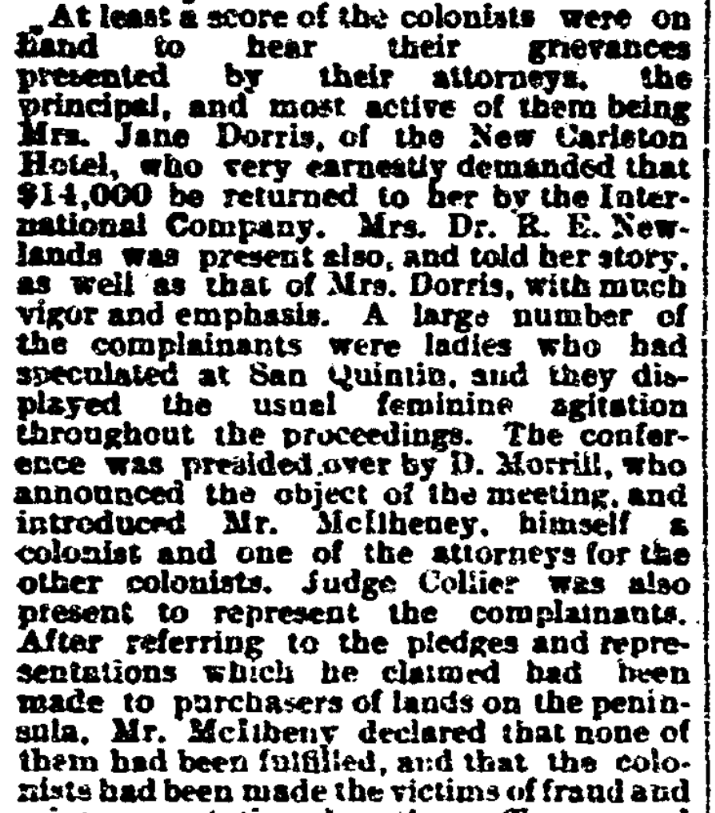
In November of 1892, Jane filed an insolvency petition, declaring that her liabilities would climb to $7,699 and that she “has no assets.”

On 28 June 1899, a San Diego newspaper reported that Jane sued her husband for divorce, “a surprise to their many friends.”
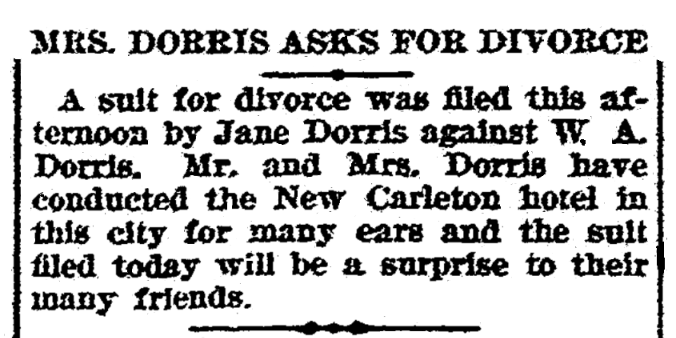
The divorce was finalized in August, and days later, she moved to Jerome, Arizona, to manage a hotel. William died on 18 October 1899 in Los Angeles.
More misfortune struck the family. Jean “Jennie” Dorris, 13 months younger than brother Charlie, married James H. Robbins in 1897, and they had one son. She filed for divorce in July 1906 for desertion. The divorce was granted in March of the following year, with Jennie receiving custody and alimony. In April 1908, while their son attended a convent school at Sisters of Mercy in Red Bluff, California, he was kidnapped by his father.
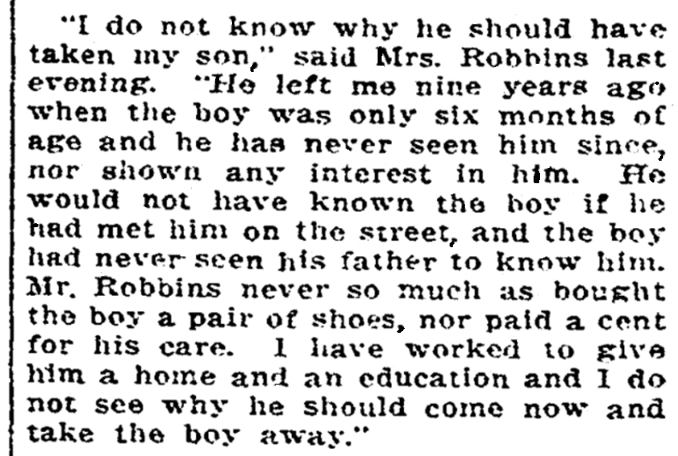
The next afternoon, father and son were spotted with a mysterious “heavily veiled” woman in Ashland, Oregon, where Robbins was arrested.*
Two years later a San Jose, California, newspaper linked Jennie’s name to a scandal.
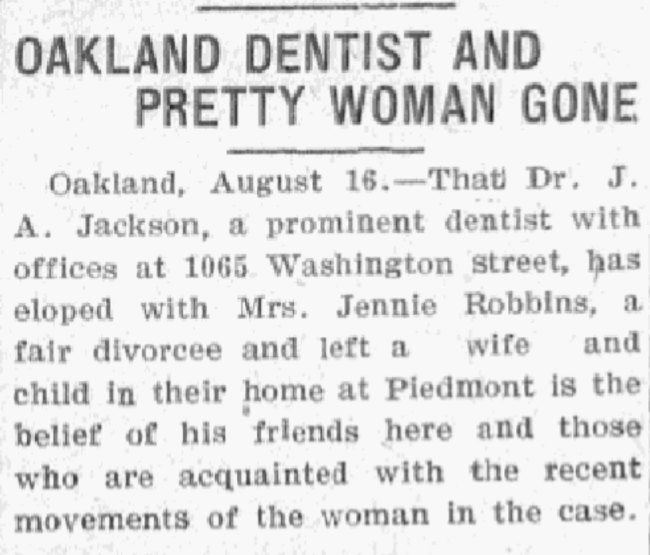
As reported in an Oakland newspaper, Jane Dorris maintained her daughter’s innocence.
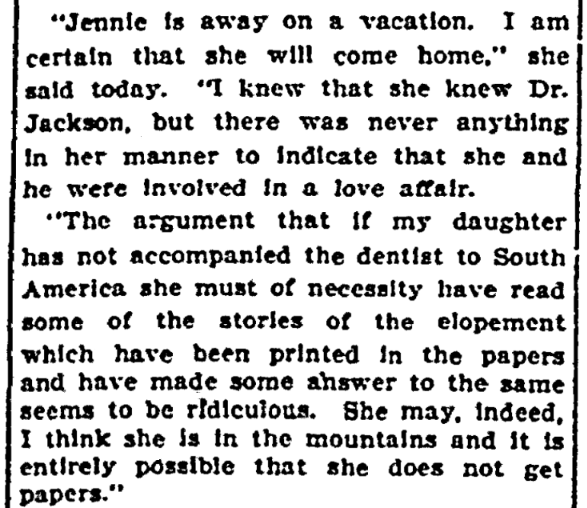
As for Charlie Dorris, he moved to Berkeley in 1900. There, he lived with his sister’s family and worked as a hotelkeeper, following in his parents’ professional footsteps.
Unlike other family members, Charlie had managed to keep his name out of the newspapers – but that would change. His name would make headlines, eclipsing their misfortunes, and earning him his moniker as “Man of Tragedy.”
To be continued…
Explore over 330 years of newspapers and historical records in GenealogyBank. Discover your family story! Start a 7-Day Free Trial
Note on the header image: “Investigating a Mystery.” Designed by Freepik (www.freepik.com)
(*) “Robbins Is Charged with Child Stealing,” Weekly People’s Cause (Red Bluff, California), 25 April 1908, p. 1.
